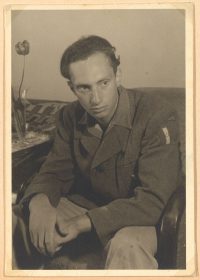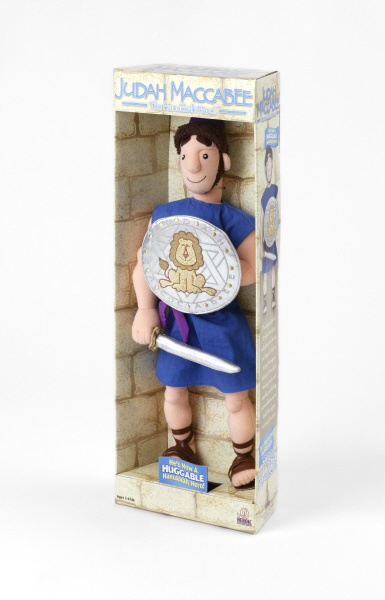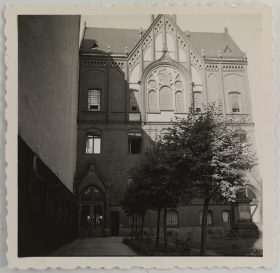The fourth episode in our blog series “Memories from the Life of Walter Frankenstein”

Walter Frankenstein during his time in the kibbutz, Greifenberg, around December 1945–May 1946; Jewish Museum Berlin, gift of Leonie and Walter Frankenstein
What were they to do now? Nothing was left of the Frankensteins’ old life. Their relatives and friends had been murdered, including Walter and Leonie’s mothers. All of Europe lay in ruins.
The first step in the Frankensteins’ new life was a simple administrative act: they registered with the Jewish Community of Berlin and were assigned an apartment. However, due to the bad supply situation, they were advised to leave Berlin as soon as possible. Nevertheless, they decided to spend the summer in Berlin. Walter volunteered as a manager for the Neukölln Leisure Games. At the same time, he made contact with the Jewish Brigade. Over the course of the war, the British Mandate government had drastically reduced the channels for legally entering Palestine. That meant that for the roughly 250,000 displaced persons ( DPs) in camps in western Europe, illegal entry was often the only way to reach Palestine. Walter managed to arrange an opportunity for legal emigration for Leonie and the children through the members of the Jewish Brigade. In return, he promised to smuggle young Jews southward through Germany for the Brigade. Their destinations were harbors on the Mediterranean where underground Jewish organizations prepared ships for their illegal entry into Palestine.
→ continue reading
Gifts are not traditionally given on Hanukkah. Nevertheless, a small industry has started to develop Hanukkah products. No wonder that some objects in our collection are blue-white-plushy – and “made in China” …

Judah Maccabee rag doll JUDAH MACCABEE / The Hanukkah Hero!; Jewish Museum Berlin, photo: Jens Ziehe
→ continue reading
Second Episode of our blog series: “Remembrances of the life of Walter Frankenstein”
Jesse Owens – this name means something to most people, even today. The black athlete from the U.S. national team decided in 1936, disregarding the expectations and fears of his family, friends, and a large number of Americans, to compete in the Olympics in Berlin. In light of the political climate prevailing in the place where the Olympics were to be held – where Antisemitism, propaganda, and violence against minorities were routine aspects of life, international opinion placed little stock in the chances of a fair competition among the athletes.

Exterior view of the Auerbach Jewish Orphanage, Berlin, around 1940–1944; Jewish Museum Berlin, gift of Leonie and Walter Frankenstein
For Walter Frankenstein, the name Owens was closely tied to the experience of moving from his home town of Flatow (today Złotów) in what was then West Prussia to Berlin. When he arrived by train at the Alexanderplatz station on 27 July 1936, preparations for the Summer Olympics to be held in the German capital were in full swing. Walter attended the event with an uncle on his mother’s side and thus had the opportunity to see Jesse Owens competing live in Berlin’s Olympic Stadium. Owens was the most successful male athlete of the Games, winning four gold medals.
→ continue reading


